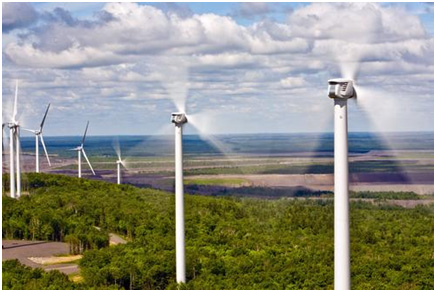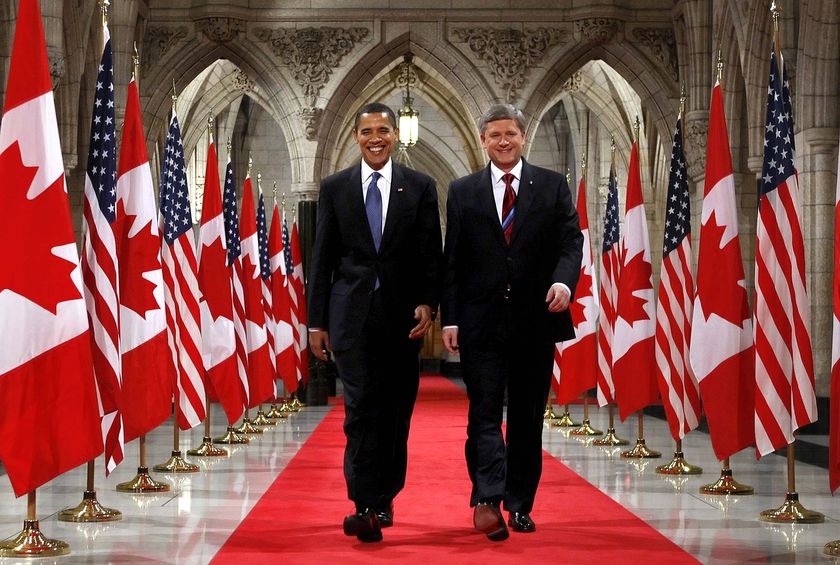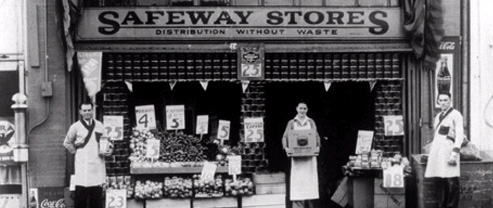Energy Development on Native Lands
 Think “energy development on Indian lands” and probably wind, solar, geothermal and biomass projects - renewables - are what come to mind, but that’s not all that’s happening in on Native American reservations. Coal, which supplies more than 50 percent of America’s electricity, is still very much in the mix, and for good reason.
Think “energy development on Indian lands” and probably wind, solar, geothermal and biomass projects - renewables - are what come to mind, but that’s not all that’s happening in on Native American reservations. Coal, which supplies more than 50 percent of America’s electricity, is still very much in the mix, and for good reason.
Former Sen. Ben Nighthorse-Campbell, R-Colo., told Congress just five years ago, “Indian lands comprise approximately 5 percent of the land area of the United States, but contains an estimated 10 percent of all energy reserves in the United States, including 30 percent of known coal deposits located in the western portion of the United States.”
Coal deposits are a big part of many tribes’ patrimony. Coal can be the resource that provides a decent standard of living, sends kids to college, and finances the struggle to affirm and maintain tribal sovereignty.
Steven J. Morello (Sault Ste. Marie Tribe of Chippewa Indians) is director of the U.S. Energy Department’s Office of Indian Energy Policy and Programs. “Energy development will be worth three times what gaming is worth in Indian Country,” he said. “Tribes need to take stock of their energy resources.”
Morello listed some of the energy projects on Indian reservations: the Northwest Band of Shoshone Nation is building the first of five geothermal plants and its entire output is already sold; the St. Croix Chippewa Indians of Wisconsin have built an exemplary biomass facility; and the Oklahoma Cherokee, the Navajo Nation and many other tribes are working on wind projects.
Then there are the major coal projects: Many Stars CTL (coal-to-liquid) facility on the Crow Reservation in Montana and Desert Rock Energy Project, a coal-fired power plant in New Mexico on the Navajo Nation.
“The CTL plant will produce synthetic jet fuel for the Air Force,” said Morello.
When fully operational, the plant will provide millions in revenues each year to the Crow Nation. This will give them the opportunity to truly determine their own destiny.”
On Desert Rock, Morello said, “The Navajo Nation doesn’t yet do gaming and has great economic need. We advise tribes, ‘Don’t sell your raw materials, sell a product.’ That’s what the Navajo Nation is doing. The plant will generate electricity and provide jobs.
Many Stars CTL Project
Crow Tribal Chairman Carl Venne said the Many Stars Coal to Liquid project would not only “secure the future of the tribe and its members for generations, but would also enhance national security by making the United States less dependent on foreign oil.”
“On the Crow Reservation we have a 47-percent unemployment rate and a yearly average family income of $7,000 to $10,000. Our people are the poorest of the poor; we don’t make money from gaming,” Venne said. “We together as Indian tribes have an American dream to own our own homes, have jobs, and send our kids to school. But the federal government can’t do this.”
“We’ve given up a lot to this nation, which has not taken care of our tribe. Our land base was 38 million acres; now it is 2.5 million acres. What it boils down to is this: The government has managed our resources for 140 years and we lost everything. We’re tired of waiting for the federal government. We want the opportunity to make our own decisions and mistakes.”
How important is this project for the tribe? “We have the resources to secure the reservation for generations to come. That’s how important it is,” Venne answered.
Ken Roberts, COO of Australian-American Energy Company, a subsidiary of Australian Energy Company, the developer of Many Stars, explained that the project would use coal gasification combined with Fischer-Tropsch process, generally referred to as coal-to-liquids: Coal is first partially oxidized to create a synthesis gas made of hydrogen and carbon monoxide and then it is converted catalytically (a chemical process under heat and pressure…the Fischer-Tropsch process) into a synthetic crude. That can then be refined into transportation fuels and other chemicals. “Basically, the process takes the coal molecules apart and puts them back together in another form to create ultraclean transportation fuels. In this case, the plant will produce both synthetic diesel and jet fuel.
Roberts said the Fischer-Tropsch process has been around since before World War II. In the past several years the Department of Energy and the Department of Defense have carried out studies to verify the benefits of synthetic fuels made using the Fischer-Tropsch process. Results have been good, and the Air Force is moving toward certifying its entire fleet of jets to use this fuel.
“The technology will help us achieve energy independence and security,” Roberts said. “This is fuel produced from domestic supplies of resources, not foreign oil. The project is of huge strategic importance to the U.S. and helps set the pathway for other CTL projects in this country.”
The Crow project will need two to three years for design work, including final site selection of the plant and the coal mine that will supply it, with these initial development costs in the $100-million range.
About $7 billion will be needed in capital costs for construction of the plant, which will take about four years. “CTL facilities are highly capital-intensive projects,” said Roberts. Investors from the U.S., Australia, and other countries will get a reasonable rate of return on the project because oil prices are so high. “Oil prices of $75 a barrel or higher make CTL economically viable,” said Roberts.
The Crow Tribe will receive royalties and taxes from the coal mining operation as well as share in the profits from the CTL plant, with the exact dollar amount being related to future crude oil prices. In addition, “Part of our agreement is to help develop education and training programs to meet the needs of the project and operations into the future,” said Roberts. The project is expected to create up to 4,000 temporary construction jobs and up to 900 permanent jobs on a reservation of 12,000 people.
Coal gasification in a CTL plant takes place in an enclosed system, which makes it possible to capture significant amounts of the carbon dioxide produced by the process. The carbon dioxide can then be injected into deep geologic structures (geosequestration) or sold to oil production companies for enhanced oil recovery in older reservoirs.
Roberts explained that underground gas storage is not experimental. “Naturally-occurring carbon dioxide reservoirs exist and are currently being used for enhanced oil recovery, such as Jackson Dome in Mississippi and Sheep Mountain in Colorado. Natural gas has been injected and stored in underground reservoirs by the petroleum industry for a long time.” He said the company is working with the Department of Interior to locate potential storage locations for the carbon dioxide generated by the Many Stars Project. There are also many oil fields in the area that could utilize the carbon dioxide for enhanced oil recovery.
This project, Roberts said, would use stranded coal, coal that does occur in sufficient quality or quantity to be economic to develop if costs for transporting the coal to power plants have to be added in. “The CTL plant can be built near the mine to reduce costs of transporting the coal,” said Roberts.
“That’s the same amount that would be needed to irrigate a 7,500-acre field of alfalfa,” said Roberts. “Fifteen acre feet a year represents less than 3 percent of the tribe’s water rights on the reservation today. We intend to be very attentive to water and carbon dioxide concerns. Our objective is to be technically reliable, environmentally responsible and safe.”
Desert Rock Energy Project
Steven Begay is general manager of Diné Power Authority, the Navajo Nation’s coal energy development arm and co-developer with the international development company Sithe Global Power subsidiary Desert Rock Energy Company of the proposed Desert Rock Energy Project.
Begay is acutely aware of the place coal could have in economic development on tribal lands: “There is a huge supply of coal here. From Four Corners to Grants, N.M., there is enough coal under lease to last us for 30-50 years. After that, there are harder-to-retrieve supplies good for another for 300-500 years.”
The Desert Rock project, an advanced-technology coal plant, is composed of two 750-MW units that use supercritical boiler technology, Begay explained. The units burn pulverized coal and the power plant will be built so that it can be retrofitted for carbon-dioxide capture and sequestration when that technology is mature.
For now it will have the latest emission controls, among them selective catalytic reduction (SCR) technology (the same system used to control vehicle emissions) designed to reduce emissions of carbon dioxide, nitrogen oxide, mercury and other pollutants, a bag house to contain particulates, and wet scrubbers to reduce sulfur dioxide emissions.
Frank Maisano, a spokesman for Desert Rock Energy Company, said: “This plant will be built to meet the most stringent air-pollution limits ever imposed in the United States. Other projects have used pieces of the technology, but never before has it all been combined in one project. Desert Rock will set a new standard.”
Like the Crow Tribe’s project, coal for Desert Rock will come from tribal lands, specifically from the BHP Billiton mine near Farmington, N.M., which is expanding to meet the needs of this and other projects.
Maisano said the plant would use about 4,000 acre-feet a year of water, 85 percent less than older coal-fired plants. That number includes 500 acre-feet that will be given to nearby Indian communities. “It’s non-potable water that comes from a very deep aquifer. The communities would not be able to get the water themselves. They’ll be able to use it agriculture and other purposes.” Most of the remaining 3,500 acre-feet will be used for the pollution control equipment. “The plant is air-cooled,” said Maisano, “Cooling Desert Rock does not require water.”
Transmitting power from tribal energy projects to the market is an on-going challenge because many of the transmission lines running near the reservations do not have unused capacity. The Navajo Nation is working on getting clearances to build a new 500 kV AC transmission line that would run from Four Corners to Southern Nevada.
Begay talked about the economics of coal projects on Indian lands.
“When the opposition says don’t do coal, just do wind, solar, nuclear, we still have growing demand for electricity and coal’s a big piece of meeting that demand. We need a mixture of generation.”
“We need a proper mix instead of just saying ‘Green is good.’ Coal can be the backup baseload supply to support wind and solar development. Maybe when coal runs out in 1000 years or so, we’ll need to do something else.”
The No-Coal Option
Geri Small, President of the Northern Cheyenne Tribe, and tribal attorney, Steve Chestnut of Ziontz, Chestnut, Varnell, Berley & Slonim in Seattle, talked to Native American Journal about the tribe’s experience with coal development in the mid 1960s through the early 1980s, a period during which many tribes – virtually at the insistence of the Department of Interior – were entering into leases for coal extraction on their lands.
“Between 1966 and 1971, coal companies including Peabody Western Coal, Consolidation Coal Company, and Chevron, as well as speculators, had acquired leases for coal on the tribe’s land, Chestnut said. “In 1972 and 1973 the tribal council began to realize they had essentially lost control of the reservation.”
“There was massive national interest in resources caused by the energy crisis of the early 1970s. Western coal was seen as the savior. Deals were put together by the BIA. Our royalty rate was 17.5 cents per ton, going down to 16 cents per ton if the coal was processed on the reservation.”
Said Chestnut, “It was a great giveaway and the council couldn’t live with it.”
In 1973 the tribe started to look at how they could get Interior to cancel the leases. It was a high-profile effort, said Chestnut. “The companies involved were very powerful and the tribe had little by way of financial resources.”
The tribe submitted a 600-page petition to the Secretary of Interior asking him to review and cancel the leases. At the end of 1973, Secretary Rogers Morton suspended all of the lease transactions, saying he wouldn’t go along unless the tribe agreed. “I think he wanted to give the tribe leverage to negotiate a better deal, and every company made it plain that there was room to renegotiate. But the tribe was not interested,” said Chestnut.
“This went on for several years. The tribe would never go along, but the leases were only suspended, so a legislative solution was needed,” Chestnut said. “Ultimately it took an act of Congress. The deal was that the companies would relinquish their rights to Northern Cheyenne coal and in return receive rights to federal coal located in other places the companies were already mining.”
In 1980-1981, the tribe received sizable damage payments. “The tribe had achieved its objective—they got clear title to the reservation and some damages and picked up 7,000 acres of land.” The one group of speculators that held out lost out when the final date for negotiations set by Congress expired. Their leases were automatically canceled.
“The whole strategy was conceived and executed by the tribe. Northern Cheyenne has very good tribal leaders, for example, Edwin Dahle, who is considered a tribal hero,” said Chestnut.
And since? “There’s nothing going on” in regard to the development of coal or coalbed methane on the reservation, said Small.
Chestnut offered this explanation: “The tribe is unbelievably dedicated to the reservation.”
Reprinted with permission by Native American Journal, October 2008.










 The earth’s crust is rich with minerals and transforming these ores into - metal tools, machines and equipment of all sorts, motor vehicles, solar cells, wind turbines, computers, the internet, communications satellites and the rockets that put them in orbit, medical equipment and innumerable other products - allow us to live a quality of life much different from that of our parents and grandparents. Stop and think about it. Even the most basic things we take for granted, from the roads and highways we drive on to flat screen television panels, are products of mining. Society not only relies on, but demands it receives the manufactured products it wants and has become accustomed.
The earth’s crust is rich with minerals and transforming these ores into - metal tools, machines and equipment of all sorts, motor vehicles, solar cells, wind turbines, computers, the internet, communications satellites and the rockets that put them in orbit, medical equipment and innumerable other products - allow us to live a quality of life much different from that of our parents and grandparents. Stop and think about it. Even the most basic things we take for granted, from the roads and highways we drive on to flat screen television panels, are products of mining. Society not only relies on, but demands it receives the manufactured products it wants and has become accustomed. As far as the world is concerned, economic growth resulted in the increased consumption of raw materials throughout the twentieth century. Between 1960 and 1995, world mineral use expanded by 2.5 times and metals use more than doubled (2.1 times). This growth outpaced the increase of the world’s population and occurred even though the world’s economy shifted to become more service oriented, and non-materials intensive manufacturing industries such as telecommunication and finance developed. Interestingly, metals use doubled even though metals became less important because of the increased use of plastics and other manufactured materials in the manufacturing industries.
As far as the world is concerned, economic growth resulted in the increased consumption of raw materials throughout the twentieth century. Between 1960 and 1995, world mineral use expanded by 2.5 times and metals use more than doubled (2.1 times). This growth outpaced the increase of the world’s population and occurred even though the world’s economy shifted to become more service oriented, and non-materials intensive manufacturing industries such as telecommunication and finance developed. Interestingly, metals use doubled even though metals became less important because of the increased use of plastics and other manufactured materials in the manufacturing industries.
 Think “energy development on Indian lands” and probably wind, solar, geothermal and biomass projects - renewables - are what come to mind, but that’s not all that’s happening in on Native American reservations. Coal, which supplies more than 50 percent of America’s electricity, is still very much in the mix, and for good reason.
Think “energy development on Indian lands” and probably wind, solar, geothermal and biomass projects - renewables - are what come to mind, but that’s not all that’s happening in on Native American reservations. Coal, which supplies more than 50 percent of America’s electricity, is still very much in the mix, and for good reason.

 With all of the economic challenges the world is facing, one of the most important revolves around the production of energy. It not only helps drive our economy but also provides the lights for our schools where our future leaders are being educated.
With all of the economic challenges the world is facing, one of the most important revolves around the production of energy. It not only helps drive our economy but also provides the lights for our schools where our future leaders are being educated.



 In 2006, the Greenhouse Gas and Sustainability Initiative was created in a partnership with the Environmental Protection Agency (EPA) and the California Climate registry. These partners, along with Safeway, were striving to reduce the amount of carbon released in the air and improve the quality of life. The goal was to reduce the amount of the greenhouse gas (GHG) emissions by 6% in California, and to maximize fossil fuel use reductions. This has aided the planning and construction of Safeway’s environmental management, operation, maintenance and infrastructure projects. Recently Safeway became the only company to join the Chicago Climate Exchange; which is the world’s first and North America’s only voluntary, legally binding GHG emissions reduction, registry and trading program.
In 2006, the Greenhouse Gas and Sustainability Initiative was created in a partnership with the Environmental Protection Agency (EPA) and the California Climate registry. These partners, along with Safeway, were striving to reduce the amount of carbon released in the air and improve the quality of life. The goal was to reduce the amount of the greenhouse gas (GHG) emissions by 6% in California, and to maximize fossil fuel use reductions. This has aided the planning and construction of Safeway’s environmental management, operation, maintenance and infrastructure projects. Recently Safeway became the only company to join the Chicago Climate Exchange; which is the world’s first and North America’s only voluntary, legally binding GHG emissions reduction, registry and trading program.



 In the United States, vehicles use more gasoline each year than the entire U.S. oil industry produces. Fleets and personal vehicles are ultimately responsible for most of the pollution and damage caused by the oil extraction industry. As the U.S. actively tries to alleviate its dependence on foreign oil, many groundbreaking new fuel solutions have surfaced. Many argue that U.S. energy independence can never be achieved. Then, there are those who vehemently believe that the solution to the imported oil problem, and its inherent threats, could be just around the corner.
In the United States, vehicles use more gasoline each year than the entire U.S. oil industry produces. Fleets and personal vehicles are ultimately responsible for most of the pollution and damage caused by the oil extraction industry. As the U.S. actively tries to alleviate its dependence on foreign oil, many groundbreaking new fuel solutions have surfaced. Many argue that U.S. energy independence can never be achieved. Then, there are those who vehemently believe that the solution to the imported oil problem, and its inherent threats, could be just around the corner.
